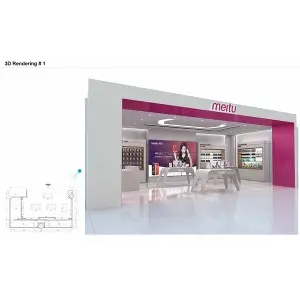ഡിസം . 15, 2024 10:56 Back to list
Exploring Innovative Retail Architecture and Store Design Concepts for Modern Experiences
Exploring the Importance of Shop Architecture and Store Design
In today's competitive retail environment, shop architecture and store design play pivotal roles in shaping customer experiences and driving sales. The elements of architecture and design are not just about aesthetics; they are strategic tools that can influence how consumers perceive a brand and interact with products. Consequently, store owners must carefully consider various aspects of design to create a compelling shopping environment.
Architectural Style and Brand Identity
The architecture of a store often serves as the first point of contact between the brand and its customers. The exterior façade can communicate the essence of a brand's identity. For instance, a high-end fashion boutique might choose sleek lines and minimalist designs, signaling luxury and exclusivity, while a family-oriented store might opt for vibrant colors and open spaces to evoke warmth and togetherness. By aligning architectural style with brand identity, retailers can effectively attract their target audience and create a memorable first impression.
Store Layout and Flow
The layout of a store is fundamental to the shopping experience. Retailers must carefully design pathways to guide customers through different sections, thereby maximizing exposure to products. A well-thought-out layout encourages exploration and can significantly increase impulse purchases. For example, many grocery stores utilize the racetrack layout, which directs shoppers along a path that ensures they encounter essential items while also providing opportunities to discover new products.
Moreover, store flow should also facilitate ease of navigation. A cluttered or confusing store can deter customers and lead to frustration. On the contrary, a logical flow promotes a positive shopping experience, increasing the likelihood of conversion from casual browsing to actual purchases.
Lighting and Ambiance
Lighting is another critical component of store design that profoundly impacts customer perception. The right lighting can enhance product visibility, create an inviting atmosphere, and set the mood for the shopping experience. For instance, soft, warm lighting may create a cozy environment in a boutique, encouraging customers to linger, while bright, white lighting might be more suitable for a technology store to emphasize product features.
shop architecture and store design

Moreover, the interplay of natural and artificial light can enhance the ambiance of a store. Large windows can invite natural light and create a connection with the outside world, making the shopping space feel expansive and welcoming.
Interior Elements and Visual Merchandising
Interior elements, including colors, materials, and fixtures, must be harmoniously combined to reflect the brand's image while also being functional. Effective visual merchandising techniques help draw attention to featured products and promotions. For example, eye-level displays and cascading arrangements can create visual interest, making products more enticing.
The use of signage is also vital. Clear, well-placed signs can guide customers through the store and help them locate specific items, thereby enhancing their overall experience.
Sustainability in Store Design
In recent years, sustainability has emerged as a critical consideration in retail architecture and design. Consumers are increasingly favoring brands that demonstrate environmental responsibility. Many retailers are adopting sustainable practices by using eco-friendly materials, energy-efficient lighting, and waste-reduction strategies in their store setups. This not only benefits the planet but can also enhance brand loyalty among eco-conscious consumers.
Conclusion
In conclusion, shop architecture and store design are more than just functional requirements; they are strategic elements that can enhance customer experience, reinforce brand identity, and ultimately boost sales. Retailers who invest time and effort into creating cohesive and inviting spaces will likely see the benefits in customer satisfaction and loyalty. As the retail landscape continues to evolve, staying ahead in shop design will be crucial for attracting and retaining customers in a crowded marketplace.
-
Ins Style Makeup Brush Storage Tube for Dorm & Dressing Table Desktop
NewsAug.30,2025
-
Heavy Duty Wooden Clothes Rack with Light for Trousers Display
NewsAug.29,2025
-
Discover Your Perfect Retail Shop: Best Deals & Selection
NewsAug.28,2025
-
Optimize Retail Displays With Advanced Rack Fitting For Shop
NewsAug.22,2025
-
Showcase Your Products Effectively With a Premium Portable Showcase
NewsAug.22,2025
-
Transform Your Retail Space With a Premium Shopfitting Store
NewsAug.22,2025


















































































































